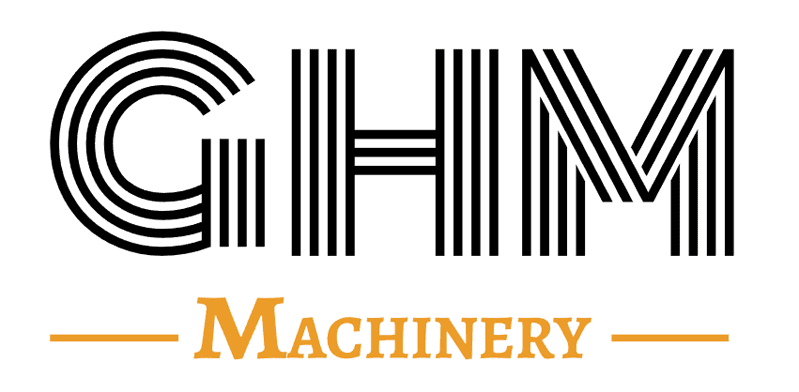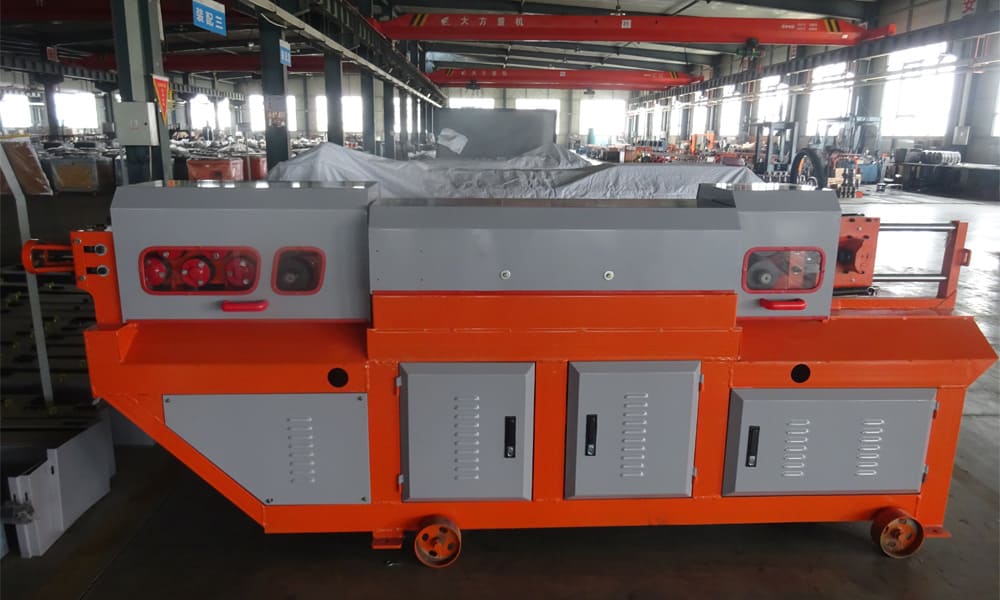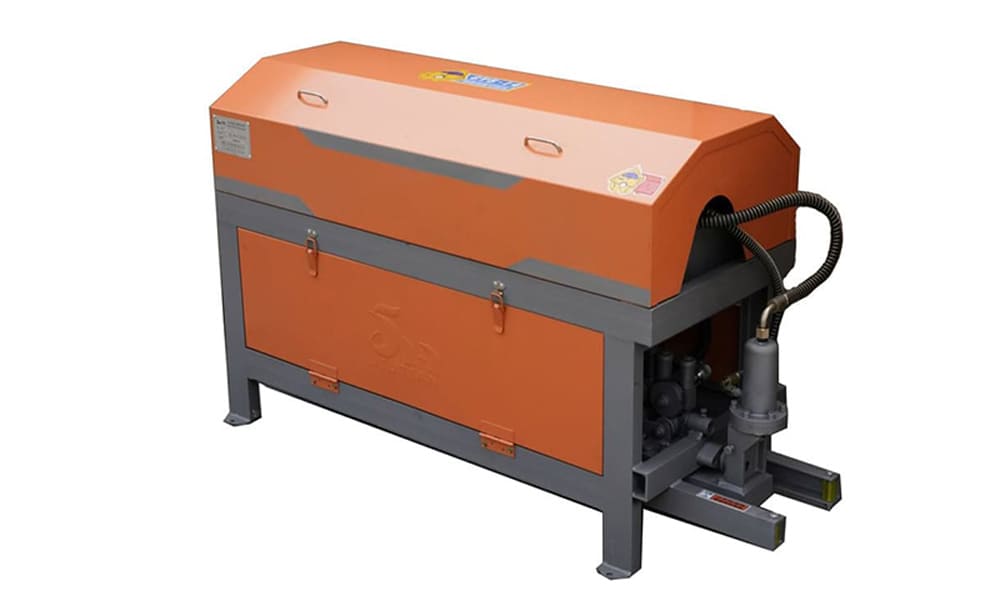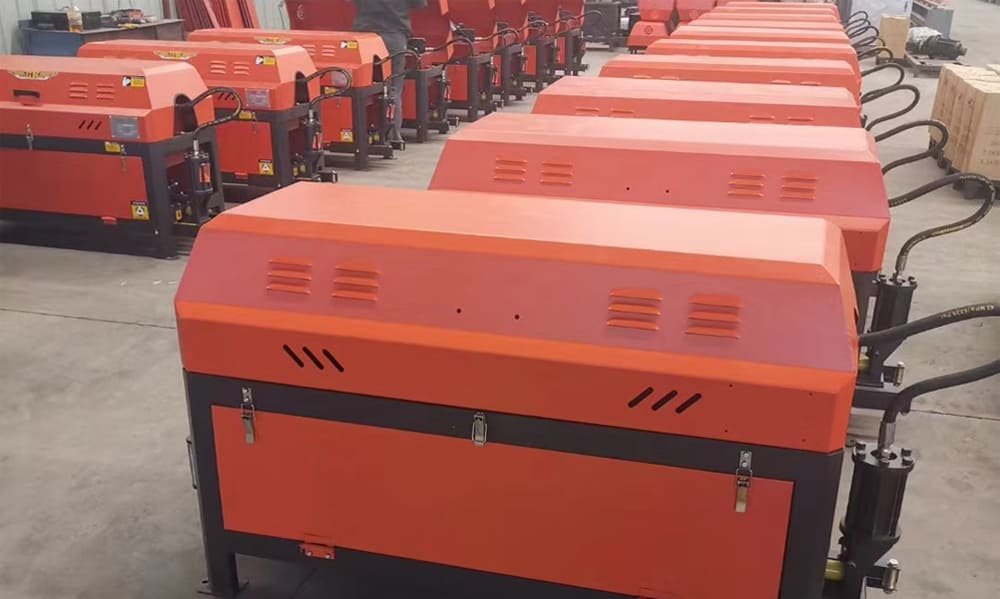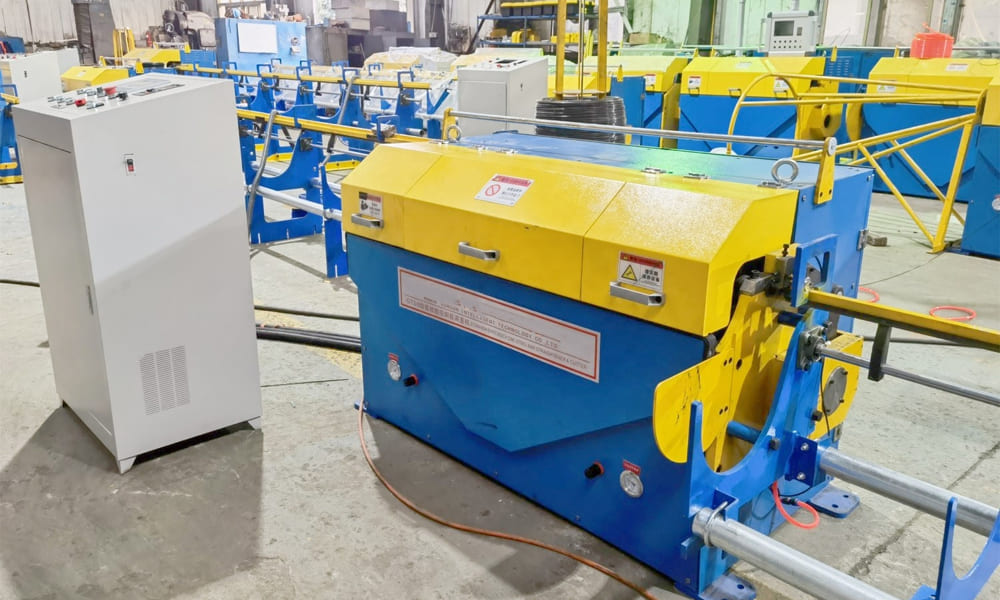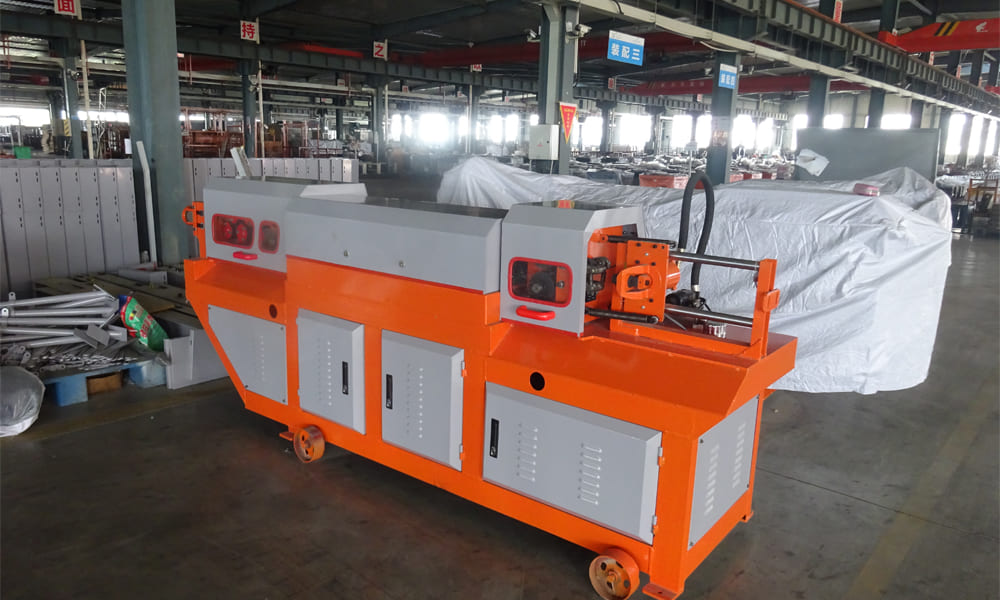Steel Bar Straightening and Cutting Machine:Steel bars are essential in construction, especially small-diameter ones under 12mm. These bars are often rolled into rings by steel mills for easy transportation and to prevent deformation. However, they require secondary processing like straightening and cutting at construction sites. Traditional methods of straightening can impact weight, dimensions, straightness, and mechanical properties of steel bars, which is inadequate for modern construction demands.
CNC steel bar straightening and cutting machine have become popular. These machines ensure precise straightening and cutting of wire rod steel bars to specified lengths, meeting high-quality standards required in construction projects. They consist of a steel bar pay-off frame, wire management frame, straightening host, and material receiving frame, automating the straightening, cutting, and aggregation process efficiently.
Modern CNC machines integrate advanced technology from global experiences, offering two main straightening methods: hub-type rotary straightening and parallel roller-type straightening. The former uses rotating hub mechanisms with straightening blocks for fast straightening but may damage surfaces. The latter, though slightly slower, maintains steel bar straightness without damage.
Upgraded CNC machines feature high-precision servo motors for sizing, ensuring length errors are within ±3mm. Rotary straightening machines now use flying shears for uninterrupted cutting during straightening, increasing processing speed. These machines also incorporate intelligent controls through touch screens for easy operation and task management, enhancing overall productivity and accuracy.
Safety Protocols for Operating Steel Bar Straightening and Cutting Machines Are Crucial:
- Check machine parts and lubrication before starting.
- Ensure proper installation and safety devices.
- Perform idling tests and regular maintenance.
- Monitor for abnormal operations or temperatures.
- Use appropriate settings for steel bar diameter and avoid adjustments during operation.
- Follow procedures for feeding and handling steel bars safely.
- Adjust straightening blocks as needed for proper straightening.
- Regularly check and adjust cutting length deviations.
- Maintain orderly placement of steel bars on racks for smooth processing.
- Ensure travel switch cam positions for safe machine movements.
- Keep unauthorized personnel away during operations to prevent accidents.
Implementing these practices ensures safe and efficient operations, meeting the high standards of modern construction projects.
